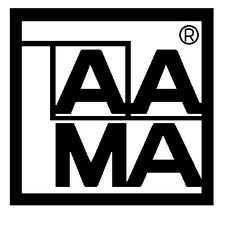AMA 611-12, "Voluntary Specification for Anodized Architectural Aluminum" has been published by the American Architectural Manufacturers Association (AAMA). AAMA 611-12 describes test procedures and requirements for high performance (Class I) and commercial (Class II) architectural quality aluminum oxide coatings applied to aluminum extrusions and panels for architectural products. The specification also covers anodized finishes produced in batch or continuous coil.
"Updated from the 1998 version, AAMA 611-12 includes clarification of visual inspection language regarding surface imperfections and addition of coating observation and angle inspection," says Andy Joswiak (Apogee Enterprises, Inc./Linetec), chair of the AAMA Anodic Finishes (AAMA 611) Task Group. "Also, the updated specification contains additions and clarifications of finishes to the applicable Aluminum Association Designation System for Aluminum Finishes for pretreatments and finishes."
AAMA 611-12 references important industry standards which include AAMA 609 and 610-09, "Cleaning and Maintenance Guide for Architecturally Finished Aluminum," AAMA 800-10, "Voluntary Specifications and Test Methods for Sealants" and ASTM B137-95 (2009), "Standard Test Method for Measurement of Coating Mass per Unit Area on Anodically Coated Aluminum."
AAMA 611-12, "Voluntary Specification for Anodized Architectural Aluminum" is available for AAMA members to download at a cost of $10. Non-members may purchase the document at a cost of $30 for download. The specification is also available for purchase on CD and hardcopy. To order AAMA 611-12, visit AAMA's Publication Store. BD+C
Related Stories
| Nov 14, 2011
Griffin Electric completes electrical work at Cary Arts Center
The Griffin Electric team was responsible for replacing the previous electrical service on-site with a 1000A, 480/277V service and providing electrical feeds for a new fire pump chiller, six air-handlers and two elevators.
| Nov 14, 2011
303 East 33rd Street building achieves LEED-NC
The 165,000 sf 12-story residential building is the first green development to be LEED certified in the Murray Hill neighborhood of Manhattan.
| Nov 14, 2011
VanSumeren appointed to Traco general manager
VanSumeren will draw on his more than 20 years of experience in manufacturing management and engineering to deliver operational and service excellence and drive profitable growth for Traco.
| Nov 11, 2011
By the Numbers
What do ‘46.9,’ ‘886.2,’ and ‘171,271’ mean to you? Check here for the answer.
| Nov 11, 2011
Streamline Design-build with BIM
How construction manager Barton Malow utilized BIM and design-build to deliver a quick turnaround for Georgia Tech’s new practice facility.
| Nov 11, 2011
AIA: Engineered Brick + Masonry for Commercial Buildings
Earn 1.0 AIA/CES learning units by studying this article and successfully completing the online exam.
| Nov 11, 2011
How Your Firm Can Win Federal + Military Projects
The civilian and military branches of the federal government are looking for innovative, smart-thinking AEC firms to design and construct their capital projects. Our sources give you the inside story.
| Nov 10, 2011
BD+C's 28th Annual Reconstruction Awards
A total of 13 projects recognized as part of BD+C's 28th Annual Reconstruction Awards.
| Nov 10, 2011
Grousbeck Center for Students & Technology opens doors
New Perkins School for the Blind Building is dedicated to innovation, interaction, and independence for students.

















